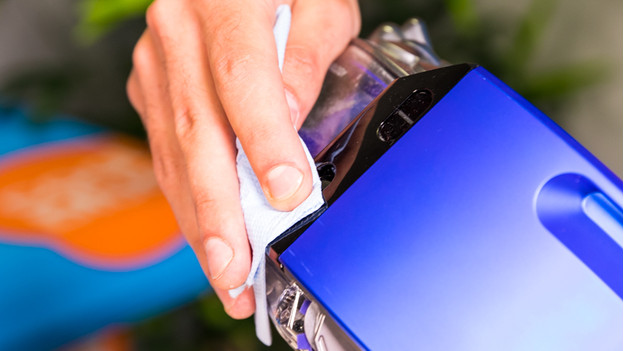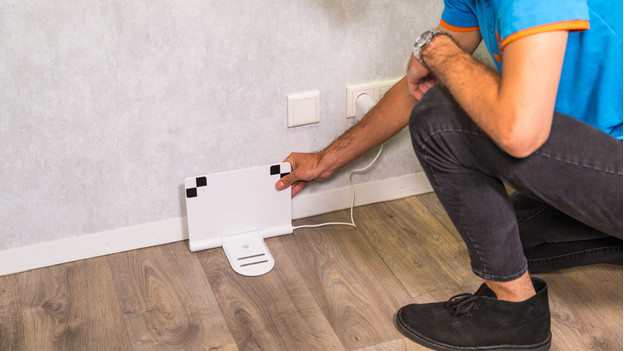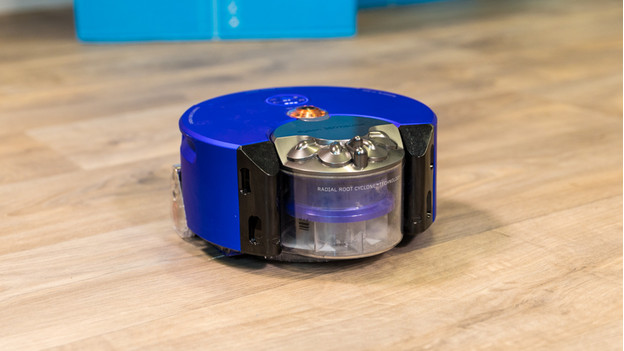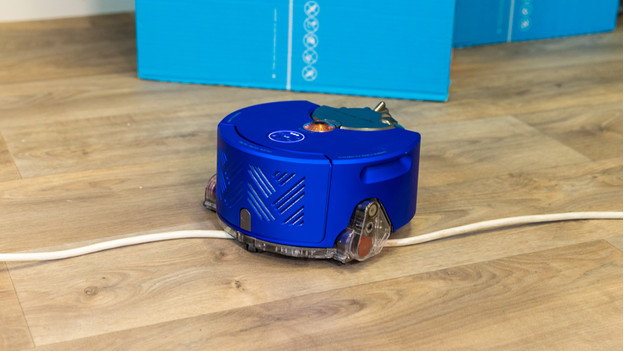First aid for robot vacuums
Get started

- Tip 1: make your space robot-friendly.
- Tip 2: clean the lasers and sensors.
- Tip 3: place the base station in the right place.
- Tip 4: keep the brightness in mind.
- Tip 5: avoid obstacles.
- Tip 6: extend the battery life.
- Tip 7: improve the suction power.
Tip 1: make the space robot-friendly

A robot vacuum does most of the cleaning for you. It's important to clean up the space first. That's because cords, elastic bands, hairpins, or toys lying around make it difficult for the robot vacuum to do its job. It can get stuck, entangled, or completely blocked. Simply put the chairs on the table and fold the tassels of your carpet under the carpet.
Tip 2: clean the sensors and lasers

Robots find their way with different types of sensors. Cliff sensors prevent the robot from falling down the stairs. Thanks to the distance sensors, the robot doesn't bump into anything. Collision sensors slow the robot vacuum down. If the robot suddenly does things that it normally doesn't do, the sensors or lasers are probably dirty. Read the advice article to find out how to clean them exactly.
Tip 3: place the base station in the right place

If the robot vacuum can't find the charging dock, it won't automatically charge and it'll run out of battery. The base station doesn't have enough space, if that's the case. In the manual of the robot vacuum, you can read how much space the base station needs. Make sure that the robot vacuum always starts at the base station. This way, it can find its way back to the base station
Tip 4: keep the brightness in mind

Many robot vacuums need light when they vacuum. The sensors don't perform as well in low light situations. Prefer to turn the robot on at night? Don't forget to leave a light on. That way, you can be sure that it won't fall down the stairs. Some robot vacuums can work in the dark. These are often robots with laser navigation. Check the manual to be sure whether your robot also works in the dark.
Tip 5: avoid obstacles

Cabinets and thresholds can be a challenge for the robot vacuum. If there's not enough light, the robot vacuum won't be able to see the cabinet and will probably get stuck. Depending on the height of the robot vacuum, it can or can't get underneath furniture. Thresholds that are too high cause the robot vacuum to turn around. If you don't want the robot vacuum to clean under the cabinet, set up no-go zones. You can usually do this via the app or with a virtual wall.
Tip 6: extend the battery life

Robot vacuums have a rechargeable battery. The quality of the battery decreases over time, just like that of a mobile phone, for example. Do you find it important that the battery lasts as long as possible? Choose a robot vacuum with a Li-ion battery, for example. These batteries are of the best quality and last the longest.
Tip 7: improve the suction power

If you compare it to a regular vacuum cleaner, a robot vacuum has a small dust cup. That's why you have to empty the dust cup after every use. This gives the robot vacuum room for more dust and dirt. You can make it easier for yourself by choosing a robot vacuum with an emptying station. It automatically empties its dust cup as soon as necessary. This means that the suction power always remains good.


